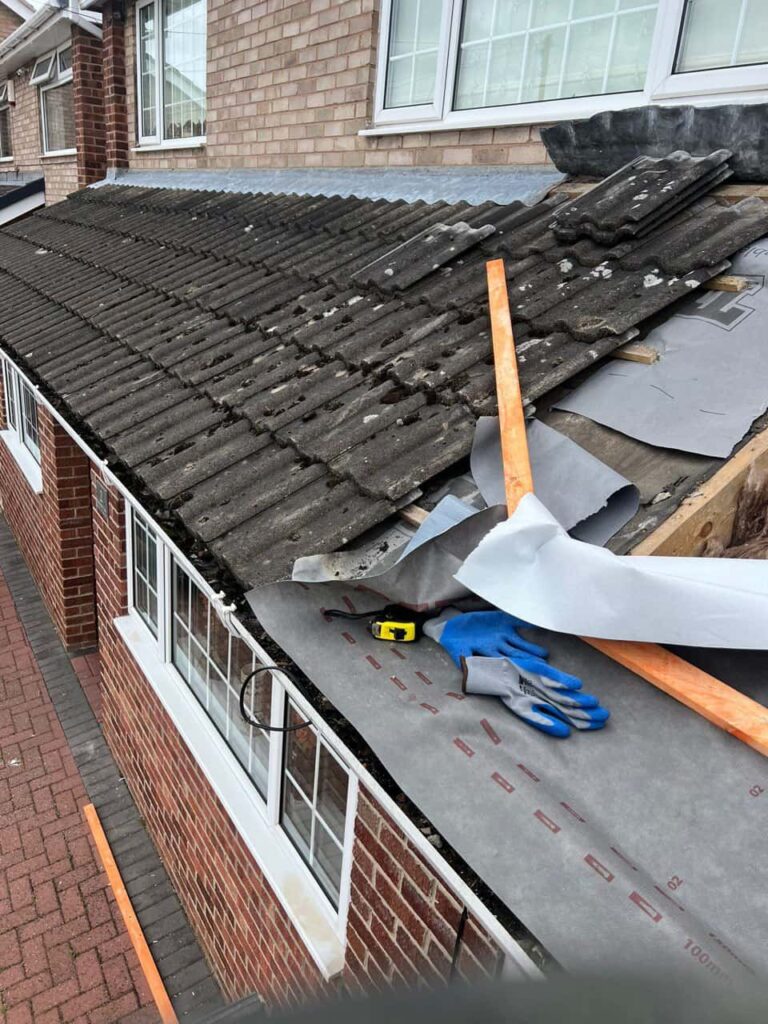Introduction: Slipped tiles on your roof can be more than just a nuisance – they can indicate underlying issues that must be addressed promptly. Understanding the common causes of slipped tiles is the first step in preventing further damage and maintaining the integrity of your roof. At Ruddington Roofing Repairs, we’re dedicated to helping homeowners identify and resolve roofing issues efficiently. In this blog post, we’ll explore some of the most common causes of slipped tiles on roofs.
Age and Wear:
- The materials can deteriorate as roofs age, leading to weakened fastenings and slipped tiles. Over time, exposure to the elements, UV radiation, and temperature fluctuations can cause roof tiles to become brittle and prone to slipping. Regular inspections and maintenance are essential for identifying and addressing signs of wear before they escalate into more significant problems.
Poor Installation:
- Improper installation of roof tiles can result in inadequate fastening and stability, making them more susceptible to slipping. If tiles are not secured properly or the wrong type of fasteners is used, they may become dislodged over time, especially during severe weather events. Hiring a reputable roofing contractor with experience in proper installation techniques is crucial for preventing slipped tiles due to installation errors.
High Winds and Storm Damage:
- Severe weather events, such as high winds, heavy rain, and hailstorms, can wreak havoc on roofs and cause tiles to slip out of place. Strong gusts of wind can create uplift forces that loosen tiles or break their fastenings, leading to displacement and slipping. Regular inspections after storms are essential for identifying and repairing any damage promptly.
Vegetation and Debris:
- The accumulation of leaves, branches, and debris on the roof can create additional weight and pressure on tiles, causing them to slip or become dislodged. Overhanging tree branches can also rub against roof tiles, leading to abrasion and damage over time. Keeping your roof clean and debris-free and trimming overhanging branches can help prevent slipped tiles due to vegetation-related issues.
Thermal Expansion and Contraction:
- Roof tiles expand and contract in response to changes in temperature, leading to stress on the roofing system. Over time, this thermal cycling can weaken the adhesive bond between tiles and the roof substrate, causing tiles to slip or shift position. Proper ventilation and insulation can help minimise temperature fluctuations and reduce the risk of slipped tiles due to thermal expansion and contraction.
Roof Settlement and Foundation Issues:
- Settlement of the roof structure or underlying foundation can result in uneven or shifting surfaces, causing tiles to slip out of place. Poorly constructed or compromised roof supports can also contribute to instability and movement in the roofing system. Addressing underlying structural issues promptly is essential for preventing further damage and ensuring the stability of your roof.
Conclusion: Slipped tiles on roofs can be caused by various factors, including age and wear, poor installation, severe weather events, vegetation and debris, thermal expansion and contraction, and roof settlement. By understanding the common causes of slipped tiles and taking proactive measures to address them, homeowners can prevent further damage and prolong the lifespan of their roofing systems. If you notice any slipped tiles on your roof, don’t hesitate to contact a professional roofing contractor for expert inspection and repair services. With our expertise and dedication to quality craftsmanship, we can help restore the integrity and stability of your roof, providing you with peace of mind and confidence in protecting your home.
Call us on: 0115 647 1193
Click here to find out more about Ruddington Roofing Repairs
Click here to complete our contact form and see how we can help with your roofing needs.

